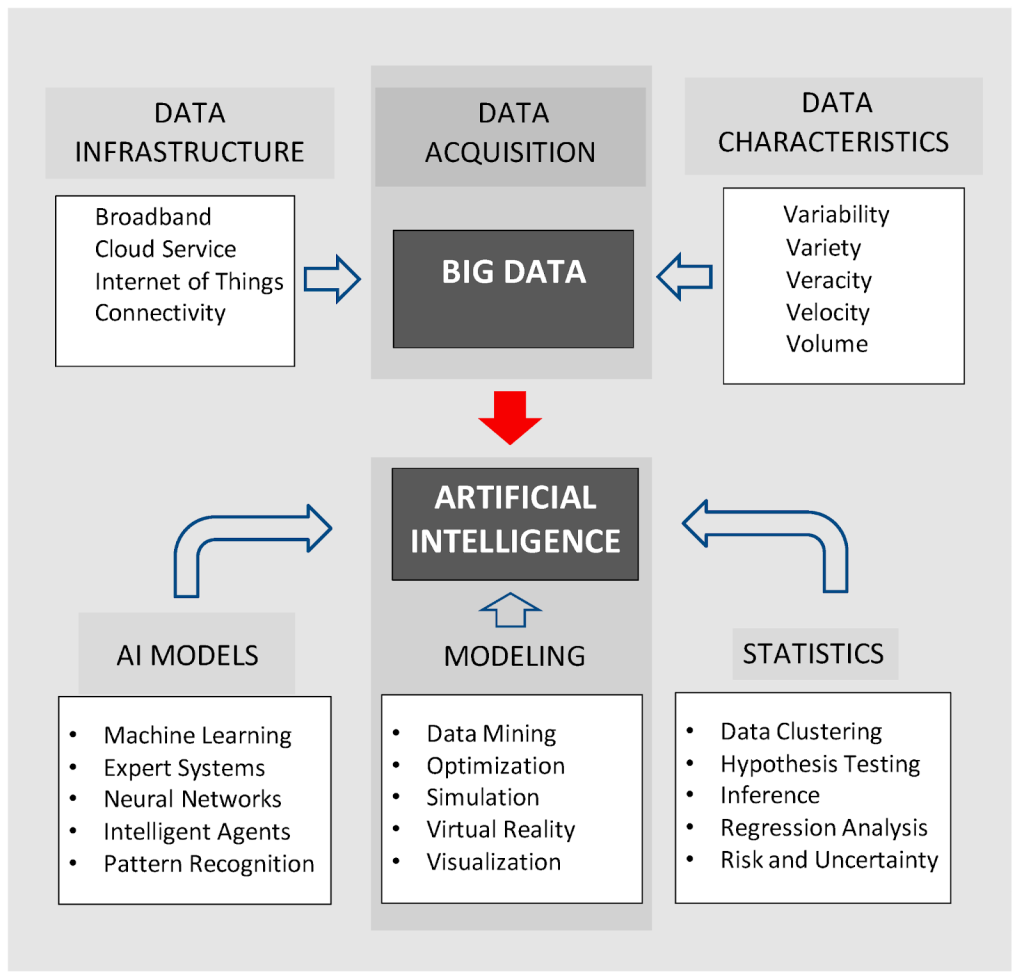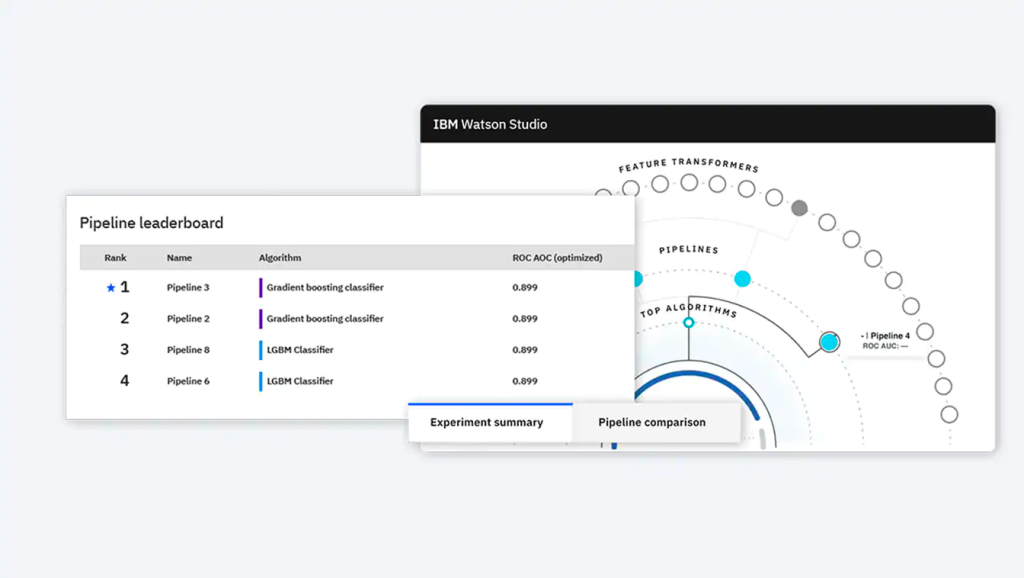Published on: May 3, 2023 Updated on: February 14, 2024
AI Operating Systems Guide: What They Do and Tools to Help
Author: Christina Muir

Artificial intelligence (AI) is transforming our world, and we have AI operating systems (AIOs) to thank (or blame). From speech recognition to image processing, these enable AI to do everything that makes our jaw drop.
In this guide, we will explore everything we know so far about AI-based operating systems, including what sets an AI-specific operating system apart from a standard one and use case examples.
By the end of it, whether you are a developer looking to build intelligent AI applications or a business owner looking to leverage AI’s power, you will be glad you stopped by AI operating system info.
What is an AI operating system?
An AI operating system is developed especially for AI systems and applications. They have the necessary tools, infrastructure, and power to build high-performance AI programs.
They are specifically designed to handle the unique requirements of AI applications, such as analyzing large amounts of data (known as big data), identifying patterns, and decision-making. They use advanced algorithms, specialized hardware, and optimization techniques to produce optimal performance on AI workloads.

Thanks to these specialized operating systems, AI models can be fully flexible and scalable. It also provides support for technologies such as machine learning, deep learning, and Natural Language Processing (NLP).
As well as this, hardware support for Tensor Processing Units (TPUs) and Graphic Processing Units (GPUs) are integrated for enhanced performance. Below is a brief guideline of TPU elements.

AI operating systems also play an essential role in processing and analyzing data collected by the Internet of Things (IoT). This allows the data to be thoroughly scoured for obtaining insights and therefore making decisions.
Before AI operating systems, developers had to manually optimize algorithms for the specific hardware being used. They also had to manage big datasets and complex algorithms all on their own before integrating the AI systems into existing infrastructure. Now that they are becoming more accessible, AI systems and applications have been released from their restrictions and shown what they are fully capable of.
Why do AI systems require special operating systems?
AI systems need this technology to support the collection of unique requirements that standard operating systems cannot adhere to. On the other hand, AI operating systems have been explicitly destined for AI systems and, therefore, can give them the tools to function precisely as they should.
From specialized libraries for machine learning to distributed computing and resource management. Without them, building and deploying AI applications would be much more difficult and time-consuming.
Let’s examine why standard operating systems are not cut out for supporting AI systems. Here are some of the most prevalent:
1. Lack of optimization
For AI systems to reach their required level of performance, they need to have specialized optimization in multiple areas. The algorithms AI systems use to function must be optimized, as well as the compiler, memory, and hardware. Optimizing these aspects is crucial for allowing AI systems to process data efficiently and handle extensive datasets.
2. Not enough power
AI systems are a bit power-hungry, and therefore a normal operating system would not suffice. Computational power, storage, and memory management need a lot of power resources in order to handle complex algorithms. This has negative effects on an AI system by making it prone to crashing, slow response times, and system failures.

3. Delayed processing
Standard operating systems cannot provide AI systems with the real-time processing power they require. To achieve this, the hardware and software must have low-latency communication with one another. Essentially this means that computer data being processed across the network has little to no delay.
4. No integration
Without suitable integration options, a normal operating system is pretty useless as far as AI systems are concerned. And rightly so, because without integration, everything is much more restricted. Accessing and transferring data between file systems and databases is very important for AI systems, which is only possible with proper integration.
5. Inflexibility
What makes AI so successful is its ability to adapt continuously and carry out tasks to a high standard. Users can customize AI systems to specialize in a task to ensure that the system knows exactly what it has to do and how to do it exceptionally.
Developing AI operating systems
Developing AI operating systems is left to data scientists and those with years in the computer science industry due to it being such a challenging task. It involves making software stacks, implementing algorithms, and integrating with hardware components. To do this, common programming languages such as Python are used, as well as the following:

You will also need to have a healthy dose of patience and creativity in order to problem-solve obstacles thrown your way (because there will be many).
But all of this hard work pays off because artificial intelligence operating systems have demonstrated a lot of potential for keeping up with the rapid evolution of technology.
AI software such as macOS, iOS, and Android have revolutionized the way we interact with our devices. Intelligent virtual assistants such as Siri and Cortana (on iOS and Android, respectively) allow us to set notifications, order through Amazon, and even control appliances and gadgets within our homes with just a few words.
If you are curious about the development phases, here is a very quick breakdown:
- Establishing core components: As a developer of these types of operating systems, you must begin the process by building the core components, including system libraries, drivers, and the kernel. This will create the foundation for running AI applications.
- Implementing AI features: Once the fundamentals are put in place, it’s time for the fun part: the design and implementation of AI-specific features. This usually encompasses machine learning frameworks, NLP tools, and neural network libraries. Here are some of the many features that AI can have:

- Testing and optimization: When the system is built and ready to go, it needs to be tested and optimized before going any further. It requires rigorous testing to ensure it meets the performance and stability standards which can be done via automation or manually. When testing the stability of an operating system, or any software for that matter, it will be put under high-stress situations to make sure it doesn’t crash. The user interface will also be tweaked for best navigation.
- Deployment and maintenance: It is now time for the polished operating system to be released to customers to be used as intended. Even though it has gone through in-depth testing and optimization, it is common for minor bugs and crashes to happen down the line. That is why it is your job as the developer to continuously maintain it as well as keep it up to date with features and operations in line with the market.
AI operating system development tools
If this all sounds quite daunting, there are tools and AI-based services you can use to make the process a bit easier. Whether you need machine learning frameworks, cloud computing platforms, or neural network libraries, there’s a specialized tool for it.
Here are some examples:
1. TensorFlow
Provided by Linux, this is a powerful open-source software library tool that is used for framework building and deploying various AI applications. It offers a huge variety of resources, including support for neural networks and deep learning algorithms.
It can also help you deploy your AI operating system by providing support for running models on web browsers and portable devices. New features are always being added as well due to TensorFlow’s active community of developers.

2. PyTorch
PyTorch is similar to TensorFlow as it is an open-source machine-learning framework. One of the best things about PyTorch is its dynamic computational graph. This enables developers to build and train machine-learning models more efficiently. PyTorch can give you pre-built modules and functions to make it easier to develop and test new AI algorithms.
The following features make it a great option for building modern operating systems:
- Production ready: By transitioning between eager and graph modes, you can speed up the production process with TorchServe.
- Distributed training: You can scale distributed training and performance optimization by using the torch.distributed.backend.
- Robust ecosystem: This huge ecosystem has plenty of tools and resources to help development in computer vision and natural language processing.
- Cloud support: The software is supported by most major cloud systems, meaning you can scale your efforts easily.

3. Microsoft Azure
This one is a little bit different; it is a cloud computing tool provided by Microsoft that gives a wide variety of Google cloud-based services. This includes storage, analytics, API, and more. These tools will let you and your business develop, test, and deploy AI applications via Microsoft-managed data centers.
It’s impossible to focus on just two or three features because what this software offers is seemingly endless. From tools specifically for developers to a library of apps just for integrating AI, you’ll easily find what you need here.

3. IBM Watson
If you want to build an AI platform with NLP capabilities, you should look to IBM Watson. It is a powerful resource for those building chatbots or applications such as ChatGPT. You will also have access to in-depth analytics and data visualization tools, perfect for building accurate models.

Key takeaways
To conclude, an AI operating system is the pedestal on which the next generation of artificial intelligence technology can stand to claim notoriety. If it weren’t for this special software, we wouldn’t be anywhere near as advanced as we are now in terms of accuracy, speed, and power resources.
If you want to join the AI race, you must get acquainted with the operating systems behind their success. They hold the key to endless possibilities in the future, so it’s definitely a relationship worth investing in.
Christina Muir
Christina's expertise in the tech industry allows her to provide insightful and informative content to her readers, covering a range of topics from productivity and lifestyle apps to gaming and entertainment software.
Recent Articles

Learn how to use advanced search tools, newsletters, and reviews to uncover the perfect AI-focused podcast for you.
Read More
Explore the top beginner-friendly AI podcasts. Our guide helps non-techies dive into AI with easy-to-understand, engaging content. AI expertise starts here!
Read More
Explore the features of The AI Podcast and other noteworthy recommendations to kick your AI learning journey up a notch. AI podcasts won’t...
Read More